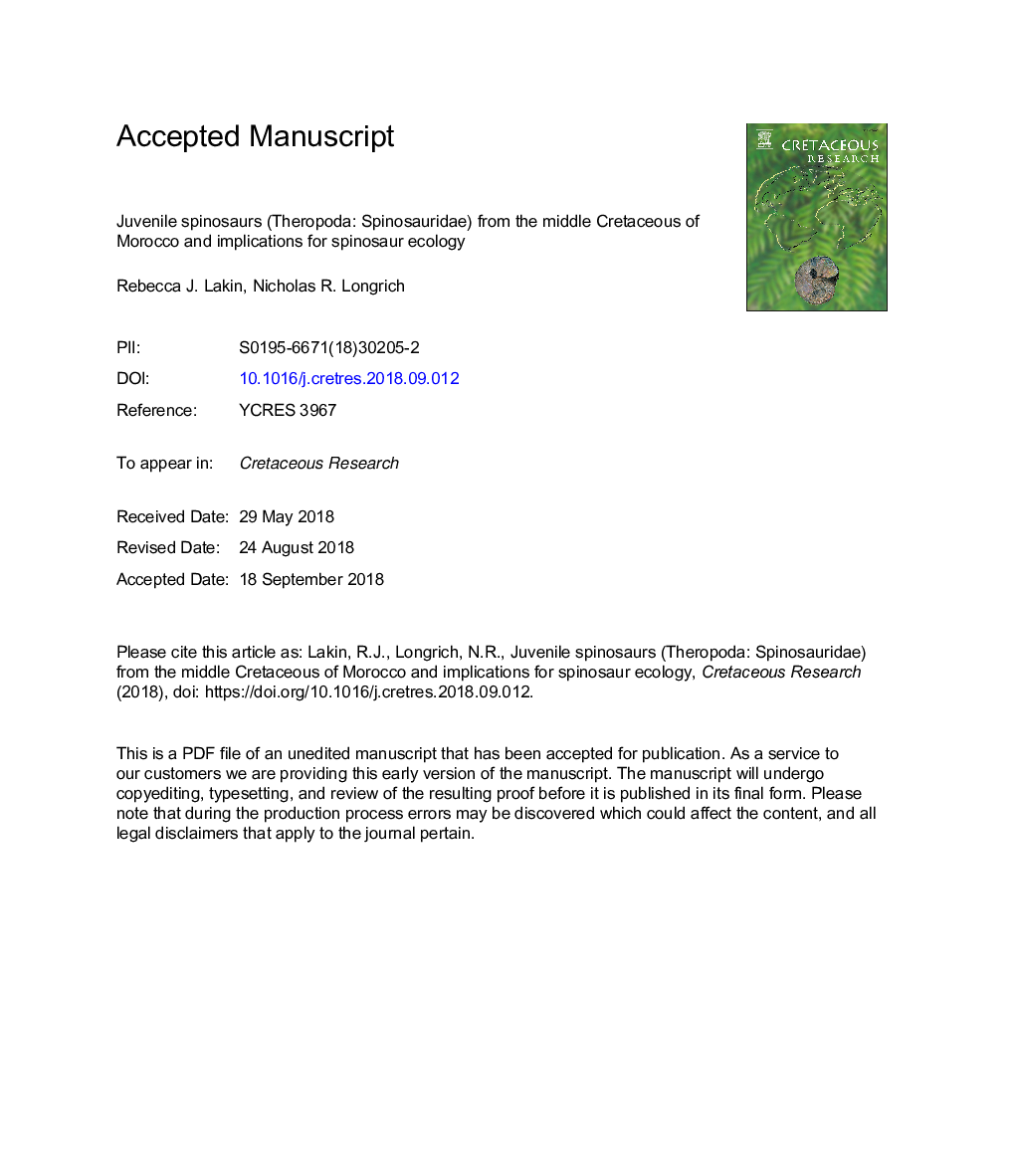| Article ID | Journal | Published Year | Pages | File Type |
|---|---|---|---|---|
| 11028485 | Cretaceous Research | 2019 | 46 Pages |
Abstract
The Spinosauridae is a specialised clade of theropod dinosaurs known from the Berriasian to the Cenomanian of Africa, South America, Europe and Asia. Spinosaurs were unusual among non-avian dinosaurs in exploiting a piscivorous niche within riverine and estuarine habitats, and they include the largest known theropod. Although fossils of giant spinosaurs are increasingly well-represented in the fossil record, little juvenile material has been described. Here, we describe new examples of juvenile spinosaurines from the middle Cretaceous (Cenomanian) Kem Kem beds of Morocco. The fossils include material from a range of sizes and are relatively common within the Kem Kem deposits, suggesting that juveniles exploited the same semiaquatic niche as the adults throughout ontogeny. This implies that the Cenomanian delta habitats supported an age-inclusive population of spinosaurs that was neither geographically or environmentally separated, though some ecological separation between juveniles and adults is likely based on the large variation in size. Bones or teeth of very small (<2Â m) spinosaurs have not been found, however. This could represent a taphonomic bias, or potentially an ecological signal that the earliest ontogenetic stages inhabited distinct environments. Skeletal remains include individuals referable to Sigilmassasaurus brevicollis and a second spinosaurine taxon. Consistent with this, we also identify two distinct cranial morphs of Spinosauridae present within the Kem Kem, supporting previous recognition of distinct taxa in the assemblage.
Keywords
Related Topics
Physical Sciences and Engineering
Earth and Planetary Sciences
Palaeontology
Authors
Rebecca J. Lakin, Nicholas R. Longrich,
